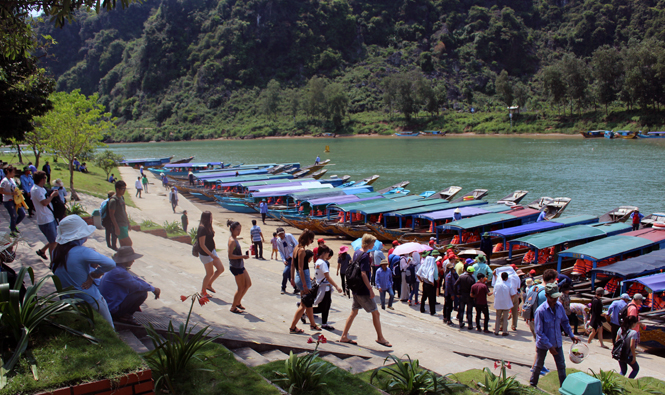Tourist arrivals to Quảng Bình exceed annual target
HCM CITY — Quảng Bình's tourism industry set a target of welcoming between 3 million to 3.5 million tourists in 2023, but in just the first nine months of the year, the region attracted nearly 3.7 million tourists, which is 2.32 times more than the same period in 2022.
Among these tourists, about 89,400 were international tourists, which is 4.07 times more than the same period last year; revenue from accommodation services is estimated to reach VNĐ454.3 billion, which is 1.35 times more than the same period last year.

Notably, in the first nine months of the year, Quảng Bình tourism continued to receive high praise from reputable domestic and international magazines such as Lonely Planet from the USA, The Travel from Canada, Wanderlust from UK, and Booking.com.
According to the Quảng Bình Department of Tourism, in recent times, the unit has been actively promoting and introducing Quảng Bình tourism to domestic and international markets at tourism events and festivals.
To diversify tourism products and enhance the visitor experience, the Quảng Bình tourism industry has also developed many new and unique products.
From the beginning of the year until now, there have been 34 tourism products and attractions approved or allowed for trial operation in the province.
Currently, the Department of Tourism is also in the process of finalizing the evaluation of two new tourism product development projects, namely "Experiencing the life of a fisherman in Quảng Bình" by Nhật Lệ Travel Company and "Trằm Mé - Chày Lập Nature and Glamping Experience” by Vĩnh Hưng Group.
The development of connected tourism products and links among provinces, cities, and regions is also a goal of the provincial Department of Tourism through exchange activities, sharing experiences with provinces such as Lai Châu and Bình Định, and conducting surveys of tourism products in western Quảng Trị.
That being said, Nguyễn Ngọc Quý, Director of the Quảng Bình Department of Tourism, noted that many tourism businesses and service providers had not yet reached their full capacity before the COVID-19 pandemic.
They were still facing difficulties due to the impact of the pandemic. The quality of infrastructure and human resources had not fully met the requirements for tourism development in the new conditions. — VNS
